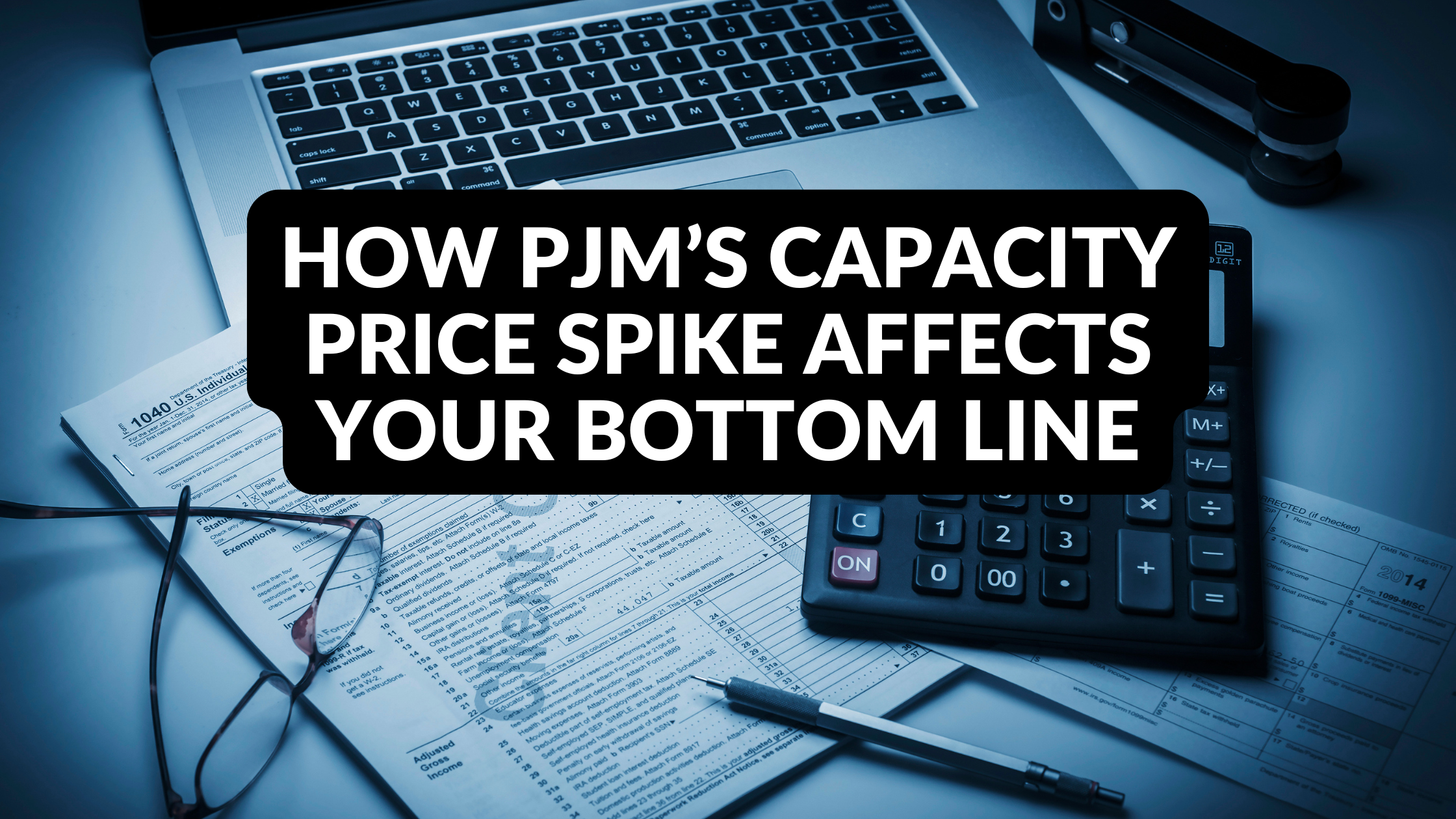
How PJM’s Capacity Price Spike Affects Your Bottom Line
PJM’s record-high capacity price is a substantial expense that will significantly inflate business energy bills. For example, an organization that paid around $5,300 in capacity charges for 2024/2025 could face $60,000+ annually starting June 1, 2026.
Here’s how the increased cost impacts you and the steps you should be considering now.
What Does This Mean for Your Energy Budget?
Let’s look at a real-world example. A business that paid around $5,366 per year in capacity charges for 2024/2025, could ultimately see their costs jump to over $60,000 annually starting June 1, 2026. That’s more than a 1000% increase, and it’s not hypothetical. This is directly tied to the business’s Peak Load Contribution (PLC) tags—which represent their share of the grid’s demand during peak periods. As capacity prices rise, the financial burden scales proportionally with the PLC value.
Breaking Down the Financial Impact
Independent of the size of a business, managing usage during peak periods is important. While it’s not possible to control the capacity rate, load curtailment and shifting strategies provide a way to minimize the impact of increased capacity rates.
Let’s break down how...
How Capacity Charges Are Calculated
A business’s capacity costs are calculated by multiplying (1) their peak load contribution times (2) the capacity rate set by PJM’s annual capacity auction.
1- Peak Load Contribution
PJM determines a business's capacity tag based on its peak load contribution (PLC).
- Calculated by averaging a business's electricity use during the five highest demand hours of the year across PJM.
- These five peak hours are called the Five Coincident Peaks, or 5CP. (A snapshot of historical peaks from 2021-2024 can be found here.)
- The capacity tag (annual value) represents the business's share of the grid's total peak demand during these times.
- The capacity tag is multiplied by the prevailing capacity rate to determine the capacity charges a business will pay over the following year (June 1 - May 31).
Successful load management strategies executed in the current year will impact capacity costs the following year, June 1 to May 31.
2 - Capacity Rate (Set by PJM’s Annual Capacity Auction)
To protect grid reliability during periods of high demand, PJM runs an annual capacity auction to secure commitment for power generation sufficient to meet forecasted demand.
Once PJM reserves the necessary power, the resulting cost is shared by companies that provide electricity, called Load Serving Entities (LSEs). The cost, called the Locational Reliability Charge (LRC) goes to power suppliers for making electricity available when needed.
For the 2026/2027 planning year the capacity rate is $329.17/MW-day.
From $5,366 to $60,000: A Real Cost Example
A brief look at capacity charges over the last three years quickly reveals the importance of taking proactive steps to manage capacity costs.

The following example assumes a peak load contribution of 500 kW.
2026/2027: $329.17/MW-day × 0.5 MW (500 kW) × 365 days = $60,074/yr for June 1, 2026 - May 31, 2027
2025/2026: $269.92/MW-day × 0.5 MW (500 kW) × 365 days = $49,260/yr for June 1, 2025 - May 31, 2026
2024/2025*: $29.40/MW-day × 0.5 MW (500 kW) × 365 days = $5,366/yr for June 1, 2024 - May 31, 2025
*2024-2025 prices for AEP, DP&L, Duke, and FE markets.
Why Acting Now is Critical
-
The Auction Price is Locked In. PJM’s clearing price of $329.17/MW-day will set capacity rates June 1, 2026, through May 31, 2027.
-
Capacity Costs Are Volume-Based. Businesses that can strategically lower their demand during system peaks can reduce their PLC tags and therefore their capacity charges.
-
The Market Pressures Persist. PJM’s tight supply-demand balance is expected to continue. As such, this year’s price spike is simply a sign of future trends.
The good news? You still have time to influence your future capacity charges.
Take Control of Your Capacity Costs
Understanding your PLC exposure and implementing a proactive load management strategy can yield cost savings.
Here’s how businesses are responding:
- Demand Response Programs: Participate in grid reliability events and receive compensation for reducing load during called events or tests.
- Peak Load Curtailment: Receive notification in advance of forecasted peak days, allowing you to adjust operations strategically. Identify operations and equipment that can be adjusted during high-demand periods. Reduce/shift load, lower your PLC tag, and potentially decrease your future capacity costs.
- Energy Efficiency Upgrades: Reduce overall consumption to minimize your capacity obligations.
View Latest Capacity Auction Insights:
Proven Strategies to Offset Your PJM Capacity Costs
Ten Ways to Control Your Business Capacity Costs
Featured posts